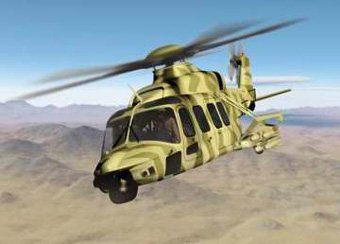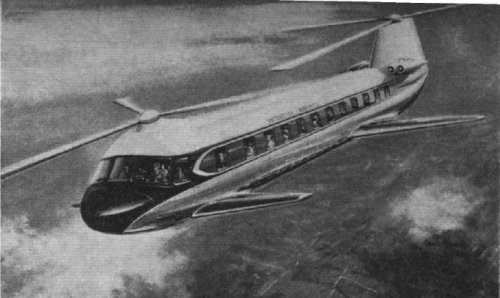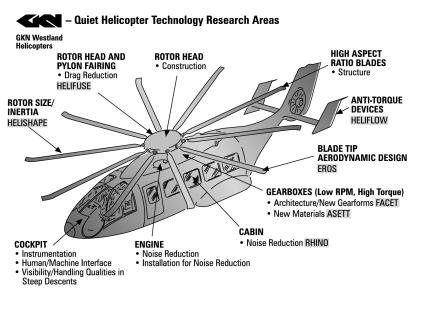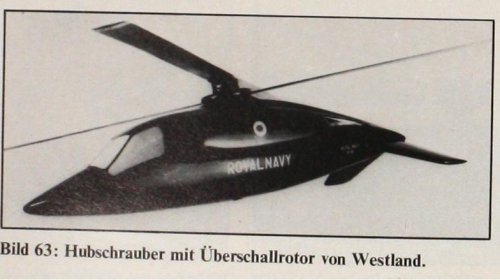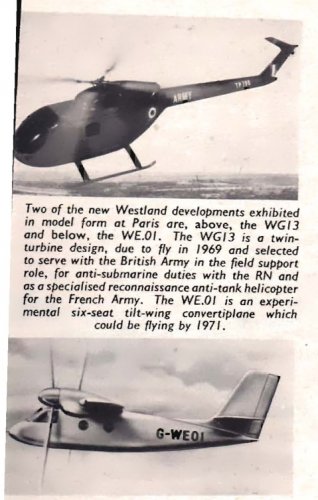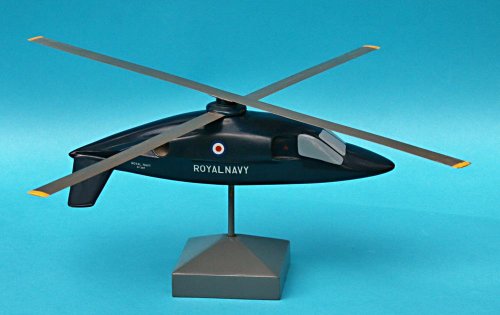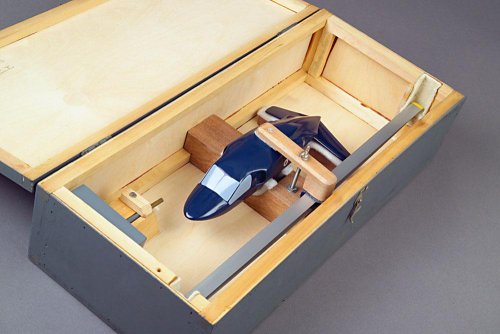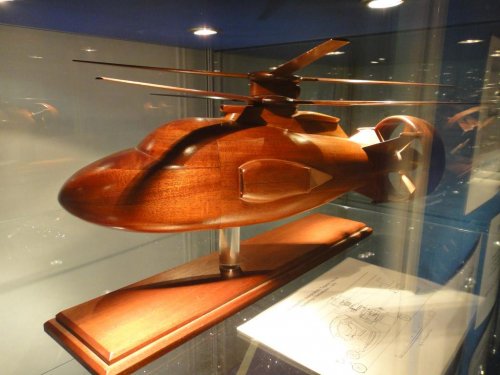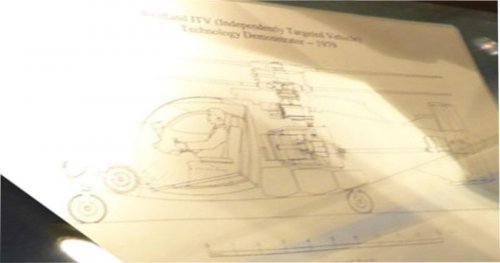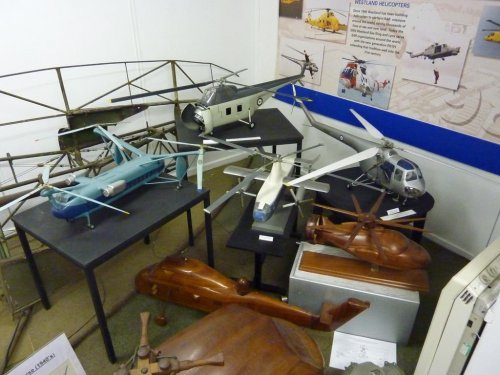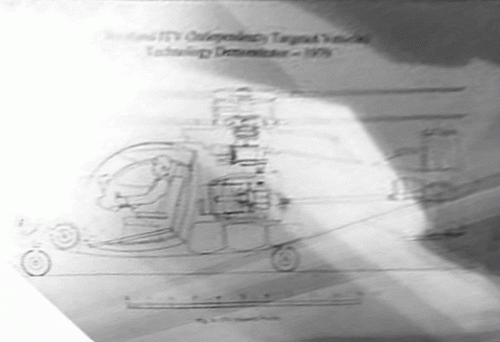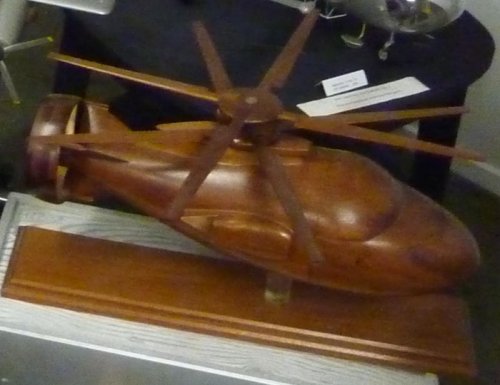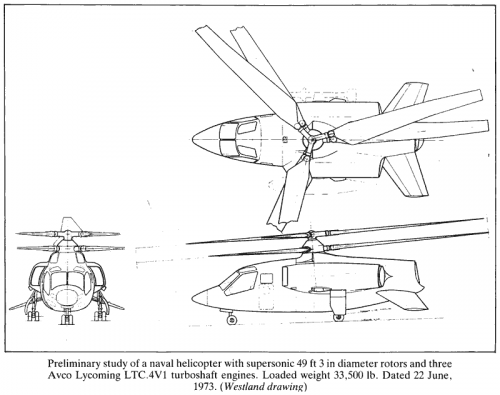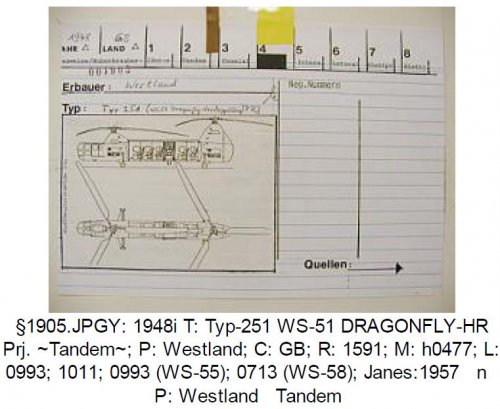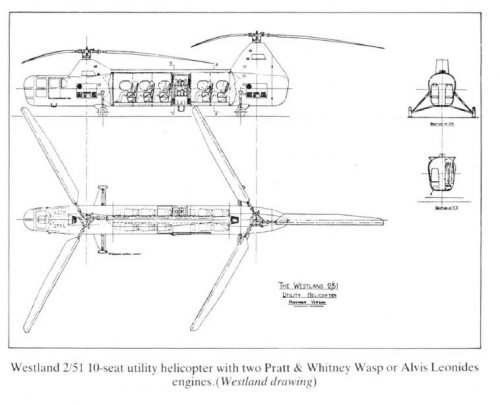You are using an out of date browser. It may not display this or other websites correctly.
You should upgrade or use an alternative browser.
You should upgrade or use an alternative browser.
Westland Helicopter Projects
- Thread starter hesham
- Start date
IIRC, there was proposed naval attack helicopter using Sikorsky's ABC (advancing blade concept) technology. Other than the cursory mention in the Putnam title, I can't find any further information on it.
http://www.secretprojects.co.uk/forum/index.php/topic,3080.msg25909.html#msg25909
IIRC, there was only a short paragraph on it in Putnam's Westland Aircraft since 1915. Thanks.
http://www.secretprojects.co.uk/forum/index.php/topic,3080.msg25909.html#msg25909
IIRC, there was only a short paragraph on it in Putnam's Westland Aircraft since 1915. Thanks.
- Joined
- 27 December 2005
- Messages
- 17,712
- Reaction score
- 26,178
Mascaret said:Interesting thread. I was Head of Future Projects at Westland from 1980 until ~1991. I think that the first project report that I wrote (1975) was on the Supersonic Rotor Helicopter study...
Nice to have you here - I don't suppose you have any interesting tales to tell?
While I'm not a huge helicopter fan, more the tiltrotor/high speed stuff, I rather liked the joint venture P.277 Attack Helicopter (http://www.secretprojects.co.uk/forum/index.php/topic,207.0).
Mascaret, great to have you here as an original information source - that's what I call an expert's forum 
Do you have further informations concerning the work on the supersonic rotor? Did Westland build a prototype of this rotor? How far did Westland proceed with this project?
Do you have further informations concerning the work on the supersonic rotor? Did Westland build a prototype of this rotor? How far did Westland proceed with this project?
The SSRH (supersonic rotor helicopter) was, as I recall, an MoD funded study contract that looked at various high speed concepts including compound helicopter, Advancing Blade Concept and SSRH. The study examined technology maturity, risk areas and performance estimation and the SSRH in particular resulted in some interesting work on predicting the paths of the shockwaves from the rotor system (most supersonic aircraft leave their shock waves behind them).
Other stuff that may be of interest: WG34 was a WHL response to the UK need for a Sea King replacement. It was taken a fair way through the design process and then compared with an Agusta project, the 3DR9 (I recall), the end result being EH101 to ASW299D. Subsequent changes to the UK requirement generated the Merlin. WG34 was initially subject to a feasibility study which examined typical parametric changes - number of main rotor blades, number of engines.
I did lots of work on advanced compound helicopters, plus UK attack helicopter studies (which were allocated WG numbers) and was on the configuration team for NH90 (Feasibility & pre-definition study) and the A129LAH project. Commercial and security considerations mean that it is not appropriate to put additional information in the public domain.
Other stuff that may be of interest: WG34 was a WHL response to the UK need for a Sea King replacement. It was taken a fair way through the design process and then compared with an Agusta project, the 3DR9 (I recall), the end result being EH101 to ASW299D. Subsequent changes to the UK requirement generated the Merlin. WG34 was initially subject to a feasibility study which examined typical parametric changes - number of main rotor blades, number of engines.
I did lots of work on advanced compound helicopters, plus UK attack helicopter studies (which were allocated WG numbers) and was on the configuration team for NH90 (Feasibility & pre-definition study) and the A129LAH project. Commercial and security considerations mean that it is not appropriate to put additional information in the public domain.
- Joined
- 27 September 2006
- Messages
- 6,399
- Reaction score
- 6,782
Mascaret
I have always been fascinated by the evolution of the WG34
into the heavier and larger EH 101. Some of the early drawings
make the WG 34 look very much like the US Seahawk. Was the
original intention to have this sort of helicopter, which would have
been an easier fit on UK frigates?
UK 75
I have always been fascinated by the evolution of the WG34
into the heavier and larger EH 101. Some of the early drawings
make the WG 34 look very much like the US Seahawk. Was the
original intention to have this sort of helicopter, which would have
been an easier fit on UK frigates?
UK 75
The origins of EH101 go back at least to 1975. I joined in that year and studies had already been conducted on what was then termed MRFH - Multi Role Fleet Helicopter. This progressed to studies under the general banner of SKR - Sea King Replacement, including a significant amount of operational analysis of ASW operations. WG34 was a product of the SKR studies.
For reasons that are easy to understand, the aircraft was always intended to operate off existing frigates, which meant constraining the rotor diameter (and the folded dimensions of the aircraft) to be no larger than a Sea King. There were also demanding maximum weight, ship motion and wind velocity / turbulence requirements to be contended with.
These sorts of studies ultimately inform the Operational Requirements staff of what can be provided at acceptable risk / cost with the prevailing technology - in this case advanced composite rotor blades (both aerofoil sections, their distribution along the blade and tip shape) and modern gas turbine engines. It would be inappropriate to comment further on the operational requirements, other than to say that delivering the required missions implied a significantly higher weight than the Sea King, within a similar rotor diameter. You then have to look at power requirements and what engines are out there to come up with a viable design.
Suffice it to say that the design and the requirements ultimately converged between the UK and Italy. The early WG34 schemes reflect the fact that before determining the actual requirement, the customer needs to explore the boundaries of what can be achieved within particular constraints. A question to be explored might, for example, be what mission profile and time on station can I deliver within a certain weight, or if I am constrained to use two engines of a specifc type, etc. Studying the resultant configurations helps to bound the eventual requirement; it doesn't mean that the particular configuration being looked at at any point in time is actually a 'front runner'. You are in fact providing information to inform decisions and, in some cases, eliminate blind alleys.
Hope this is useful. I should stress that I personally had little involvement in WG34 as such, because I was looking at even more 'blue skies' projects.
For reasons that are easy to understand, the aircraft was always intended to operate off existing frigates, which meant constraining the rotor diameter (and the folded dimensions of the aircraft) to be no larger than a Sea King. There were also demanding maximum weight, ship motion and wind velocity / turbulence requirements to be contended with.
These sorts of studies ultimately inform the Operational Requirements staff of what can be provided at acceptable risk / cost with the prevailing technology - in this case advanced composite rotor blades (both aerofoil sections, their distribution along the blade and tip shape) and modern gas turbine engines. It would be inappropriate to comment further on the operational requirements, other than to say that delivering the required missions implied a significantly higher weight than the Sea King, within a similar rotor diameter. You then have to look at power requirements and what engines are out there to come up with a viable design.
Suffice it to say that the design and the requirements ultimately converged between the UK and Italy. The early WG34 schemes reflect the fact that before determining the actual requirement, the customer needs to explore the boundaries of what can be achieved within particular constraints. A question to be explored might, for example, be what mission profile and time on station can I deliver within a certain weight, or if I am constrained to use two engines of a specifc type, etc. Studying the resultant configurations helps to bound the eventual requirement; it doesn't mean that the particular configuration being looked at at any point in time is actually a 'front runner'. You are in fact providing information to inform decisions and, in some cases, eliminate blind alleys.
Hope this is useful. I should stress that I personally had little involvement in WG34 as such, because I was looking at even more 'blue skies' projects.
Can you tell us any more about Westland's compound concepts for the EH101 and Lynx?Mascaret said:I did lots of work on advanced compound helicopters, plus UK attack helicopter studies (which were allocated WG numbers) and was on the configuration team for NH90 (Feasibility & pre-definition study) and the A129LAH project. Commercial and security considerations mean that it is not appropriate to put additional information in the public domain.
I've only seen articles in Flight International from 1997 http://www.flightglobal.com/pdfarchive/view/1997/1997%20-%200008.html?search=compound eh101
A subject close to my heart, but one that I can't really say a lot about.
I generated a new design approach for optimising a compound helicopter. This is a pretty technical topic to discuss and I don't think that AgustaWestland would want to have this aired publicly, even if the concept has not been taken to fruition.
Study work was conducted both pv and under MoD contract and continued after I left the company, without ultimately going forward. It is possible that the move to look at platform-based studies occurred before the best way to optimise the system was fully understood. The real-world constraints of introducing compound features on an existing platform (as opposed to one that is designed to be a compound from the outset) probably limited the degree to which real potential of the approach could be shown.
Equally, there was probably no appetite or money to go straight to an optimised solution with all the risk that that would entail. Consequently the proposals failed to attract funding. Classic chicken and egg, you can't get to the vision without a proof-of concept demonstrator, but you can't make a good demonstrator from a vehicle that wasn't designed with the specific application in mind.
It comes down to the fact that the collective attitude to risk in recent times is quite different than it was in the days of the Gyrodyne, Jet Gyrodyne and Rotodyne.
None of the above should be regarded as in any way critical of any of the parties or individuals involved - it reflects the facts of life in the aerospace and defence industry generally. One could equally speculate as to whether the appetite and tenacity required to produce a Harrier or a Concorde would exist today - especially given the lengthy development timescales involved between initial concept work and operational service.
I generated a new design approach for optimising a compound helicopter. This is a pretty technical topic to discuss and I don't think that AgustaWestland would want to have this aired publicly, even if the concept has not been taken to fruition.
Study work was conducted both pv and under MoD contract and continued after I left the company, without ultimately going forward. It is possible that the move to look at platform-based studies occurred before the best way to optimise the system was fully understood. The real-world constraints of introducing compound features on an existing platform (as opposed to one that is designed to be a compound from the outset) probably limited the degree to which real potential of the approach could be shown.
Equally, there was probably no appetite or money to go straight to an optimised solution with all the risk that that would entail. Consequently the proposals failed to attract funding. Classic chicken and egg, you can't get to the vision without a proof-of concept demonstrator, but you can't make a good demonstrator from a vehicle that wasn't designed with the specific application in mind.
It comes down to the fact that the collective attitude to risk in recent times is quite different than it was in the days of the Gyrodyne, Jet Gyrodyne and Rotodyne.
None of the above should be regarded as in any way critical of any of the parties or individuals involved - it reflects the facts of life in the aerospace and defence industry generally. One could equally speculate as to whether the appetite and tenacity required to produce a Harrier or a Concorde would exist today - especially given the lengthy development timescales involved between initial concept work and operational service.
"It comes down to the fact that the collective attitude to risk in recent times is quite different than it was in the days of the Gyrodyne, Jet Gyrodyne and Rotodyne. One could equally speculate as to whether the appetite and tenacity required to produce a Harrier or a Concorde would exist today - especially given the lengthy development timescales involved between initial concept work and operational service."
That exactly were my thoughts reading about the supersonic rotor research (and many other ideas). Today's shareholder pressure plays a large part in this risk-adverse trend.
Any chance we get some more info concerning the supersonic rotor?
That exactly were my thoughts reading about the supersonic rotor research (and many other ideas). Today's shareholder pressure plays a large part in this risk-adverse trend.
Any chance we get some more info concerning the supersonic rotor?
hole in the ground
ACCESS: Secret
- Joined
- 6 August 2008
- Messages
- 235
- Reaction score
- 23
I am quite interested in the FB-1 Gyrodyne and have been reading up on it. Mainly articles from flight global.
There are several interesting aspects about this 'helicopter'. First on my list is the collective, or lack thereof. Here is the description of it from an article.
Does the 'handle' operate the throttle at low ranges and then the collective at higher ranges of movement?
or is it really just a throttle and the act of applying more power to the rotors increases their pitch? If so does the rotor operate at constant rpm as with conventional machines?
In another flight article (quite a detailed one at that) there is a diagram of the rotor head and it clearly shows a swash plate which suggests some level of direct control over the collective pitch.
Does anyone have a definitive description of the operation of the Gyrodyne?
There are several interesting aspects about this 'helicopter'. First on my list is the collective, or lack thereof. Here is the description of it from an article.
In the Gyrodyne the last- mentioned (collective) is replaced by a throttle lever
As the throttle is opened, the rotor gathers speed, and when the right revs have been attained, a further movement of the throttle lever increases the pitch collectively and the machine takes off.
This automatic action is achieved by having the blade hinges sloped in such a way that, as more power is applied, the combined movement about flapping and drag hinges gives the desired pitch increase.
Does the 'handle' operate the throttle at low ranges and then the collective at higher ranges of movement?
or is it really just a throttle and the act of applying more power to the rotors increases their pitch? If so does the rotor operate at constant rpm as with conventional machines?
In another flight article (quite a detailed one at that) there is a diagram of the rotor head and it clearly shows a swash plate which suggests some level of direct control over the collective pitch.
Does anyone have a definitive description of the operation of the Gyrodyne?
- Joined
- 3 June 2006
- Messages
- 3,094
- Reaction score
- 3,949
Westland high speed helicopter concept.
Edit:
This picture was published in an article especially about high speed helicopters developments.
The roter would have been supersonic, so this concept would be only for military use.
From Flug-Revue 11/1976, page 54.
Edit:
This picture was published in an article especially about high speed helicopters developments.
The roter would have been supersonic, so this concept would be only for military use.
From Flug-Revue 11/1976, page 54.
Attachments
- Joined
- 18 October 2006
- Messages
- 4,203
- Reaction score
- 4,890
fightingirish said:Westland high speed helicopter concept.
From Flug-Revue 11/1976, page 54.
An interesting co-axial. Does anyone know if there is anything other than a spiffy model on this particular effort? Although without some serious rotor rigidity I am not sure I would want to fly the bugger.
- Joined
- 3 June 2006
- Messages
- 3,094
- Reaction score
- 3,949
- Joined
- 25 June 2009
- Messages
- 14,732
- Reaction score
- 6,072
I have split this formerly long topic into separate and meaningful topics of their own whenever possible. I have also consolidated them with related, isolated posts from other topics on the forum. I also did the same with Westland aircraft.
All Westland-related topics (at least those that have "Westland" in their title) are now as follows:
Westland rotorcraft
The work I did on Westland is a glimpse into the way I'd love for the information to be organised and retrievable on this forum.
I sincerely hope this method will find everyone's approbation and will make SPF even more useful and handy than it already is!
All Westland-related topics (at least those that have "Westland" in their title) are now as follows:
Westland rotorcraft
- Westland helicopter projects here.
- Westland VTOL convertiplane projects here.
- Hunting-Percival (later Westland) P.74 prototype here.
- Westland W.80, W.81, W.85 and W.90 Goliathhere.
- Westland Westminster here.
- RAE SUPERVISOR installation on Westland Wessex - photographs here.
- Westland Wessex replacement after Westminster and before Puma here.
- Westland Lynx projects here.
- Westland WG Series Designations here.
- Westland WG.11 here.
- Westland WG.30 here.
- Westland WG.33 here.
- Westland WG.34 here.
- AgustaWestland AW169 here.
- AgustaWestland buys out Bell for civil tiltrotor here.
- AgustaWestland AW189 unveiled at Paris Le Bourget here.
- Archives contact at Agusta Westland? here.
- What helicopters should Westland have made? here.
The work I did on Westland is a glimpse into the way I'd love for the information to be organised and retrievable on this forum.
I sincerely hope this method will find everyone's approbation and will make SPF even more useful and handy than it already is!
- Joined
- 31 May 2009
- Messages
- 1,154
- Reaction score
- 665
- Joined
- 13 June 2007
- Messages
- 2,172
- Reaction score
- 3,077
Wow - impressive!
Thanks yet again! Mark
Thanks yet again! Mark
- Joined
- 18 October 2006
- Messages
- 4,203
- Reaction score
- 4,890
I'll second the request for additional information about supersonic rotors.Basil said:Thanks, circle-5. It would be really interesting to get additional information about these supersonic rotors.
- Joined
- 31 May 2009
- Messages
- 1,154
- Reaction score
- 665
yasotay said:I'll second the request for additional information about supersonic rotors.Basil said:Thanks, circle-5. It would be really interesting to get additional information about these supersonic rotors.
I sent a PM to SPF member Mascaret, who wrote the 1975 report on supersonic rotor helicopter research for Westland Helicopters.
If he gets my message, if he still has the report, if it's not classified and if he is willing to share it, then I will do the same.
- Joined
- 27 December 2005
- Messages
- 17,712
- Reaction score
- 26,178
Masceret hasn't been active on the forum since 2010 and his email no longer works unfortunately.
- Joined
- 26 May 2006
- Messages
- 34,828
- Reaction score
- 15,709
My dear Paul,
I tries to find anything about Mascaret on Internet,but no way,I didn't
find his name in any forum sites,may be I could wrong,but no signal to
him.
And for EH.101 as a compound helicopter,please see;
http://www.secretprojects.co.uk/forum/index.php/topic,7468.msg64866.html#msg64866
I tries to find anything about Mascaret on Internet,but no way,I didn't
find his name in any forum sites,may be I could wrong,but no signal to
him.
And for EH.101 as a compound helicopter,please see;
http://www.secretprojects.co.uk/forum/index.php/topic,7468.msg64866.html#msg64866
- Joined
- 11 March 2006
- Messages
- 8,622
- Reaction score
- 3,779
Just for clarity: There are quite a number of definitions for the term "compound helicopter" and, yes,
there's a least one, counting a heli with auxiliary wings as a compound. But the majority, I think, states
that a compound helicopter is one, that uses an additional system, independent from the main rotor for
forward propulsion.
To me, this definition makes much more sense, if only because it would be difficult to deny the term "compound"
for, say the Bell AH-1, or the AH-64 or actually every other attack helicopter.
In the case of the AEW Merlin auxiliary wings may be useful, as for that purpose, the helicopter wouldn't
need best performance in the hover (which usually is impaired by such wings).
there's a least one, counting a heli with auxiliary wings as a compound. But the majority, I think, states
that a compound helicopter is one, that uses an additional system, independent from the main rotor for
forward propulsion.
To me, this definition makes much more sense, if only because it would be difficult to deny the term "compound"
for, say the Bell AH-1, or the AH-64 or actually every other attack helicopter.
In the case of the AEW Merlin auxiliary wings may be useful, as for that purpose, the helicopter wouldn't
need best performance in the hover (which usually is impaired by such wings).
- Joined
- 31 May 2009
- Messages
- 1,154
- Reaction score
- 665
PaulMM (Overscan) said:Masceret hasn't been active on the forum since 2010 and his email no longer works unfortunately.
There should be a law against leaving the forum without authorization...
- Joined
- 11 March 2006
- Messages
- 8,622
- Reaction score
- 3,779
Triton said:Models from the International Helicopter Museum located at Weston-Super-Mare, UK.
"tazdevil53" probably is an aviation nut, but "garybembridge" isn't. Nevertheless, we get at
least another view of the ITV model:
Attachments
- Joined
- 3 June 2006
- Messages
- 3,094
- Reaction score
- 3,949
Westland concepts, found at beyondthesprues.com :
- http://i729.photobucket.com/albums/ww291/joncarrfarrelly/WESTLAND_2-51_01.png
- http://i729.photobucket.com/albums/ww291/joncarrfarrelly/WESTLAND_WG17D_01.png
- http://i729.photobucket.com/albums/ww291/joncarrfarrelly/WESTLAND_200SEAT_01.png
- Joined
- 25 June 2009
- Messages
- 14,732
- Reaction score
- 6,072
circle-5 said:From the same Photobucket album, a 3-engine variant of the 1973 Westland SSRH, with 3-bladed rotors:
I'm pretty sure we have a post or two on this one already... These pics are from the Putnam book.
- Joined
- 26 May 2006
- Messages
- 34,828
- Reaction score
- 15,709
Hi,
here is from Germany museum site,the Westland 2/51,a tandem rotor helicopter
project of 1951,they wrote its name wrong as Type-251,but it was known as
2/51 ,and from Westland book,also the same drawing for it.
http://kulturserver-nds.de/home/hubtest/medien/Typenkartei3953xGUN7x9T3Z7.pdf
here is from Germany museum site,the Westland 2/51,a tandem rotor helicopter
project of 1951,they wrote its name wrong as Type-251,but it was known as
2/51 ,and from Westland book,also the same drawing for it.
http://kulturserver-nds.de/home/hubtest/medien/Typenkartei3953xGUN7x9T3Z7.pdf
Attachments
Similar threads
-
-
Agusta A.101-G triple-engine helicopter project......
- Started by Caravellarella
- Replies: 23
-
-
-

